If you asked a random person what they thought the largest online retailer in the world is, they’re likely to say Amazon — and that would be correct based on Amazon’s 2021 revenue. But did you know that Alibaba is up there with Amazon as one of the largest ecommerce companies in the world?
It’s an impressive feat for sure — but what is Alibaba?
Founded in 1999 by an English teacher named Jack Ma, China’s Alibaba is a massive international business with many different arms.
Like its U.S. counterpart, Amazon, Alibaba dabbles in a little bit of everything. Ecommerce, banking, technology, and cloud computing are just a few of its functions.
This article breaks down the key info you need to know to understand and use Alibaba:
What is Alibaba?
Alibaba originally began as a peer-to-peer platform similar to Amazon and Ebay, connecting businesses-to-consumers (b2c) businesses-to-businesses (b2b), and even consumers-to-consumers (c2c).
These functions are divided into three separate sites: Taobao for c2c, Tmall for b2c, and Alibaba for b2b.
Alibaba
The flagship site, Alibaba, is Alibaba Group’s international business-to-business platform. It connects businesses to global manufacturers. Using Alibaba, a business can find a manufacturer to create bulk products and import them into their country.
In many ways, Alibaba acts as the sister site to Amazon, as many of Amazon’s merchants purchase goods from Alibaba.
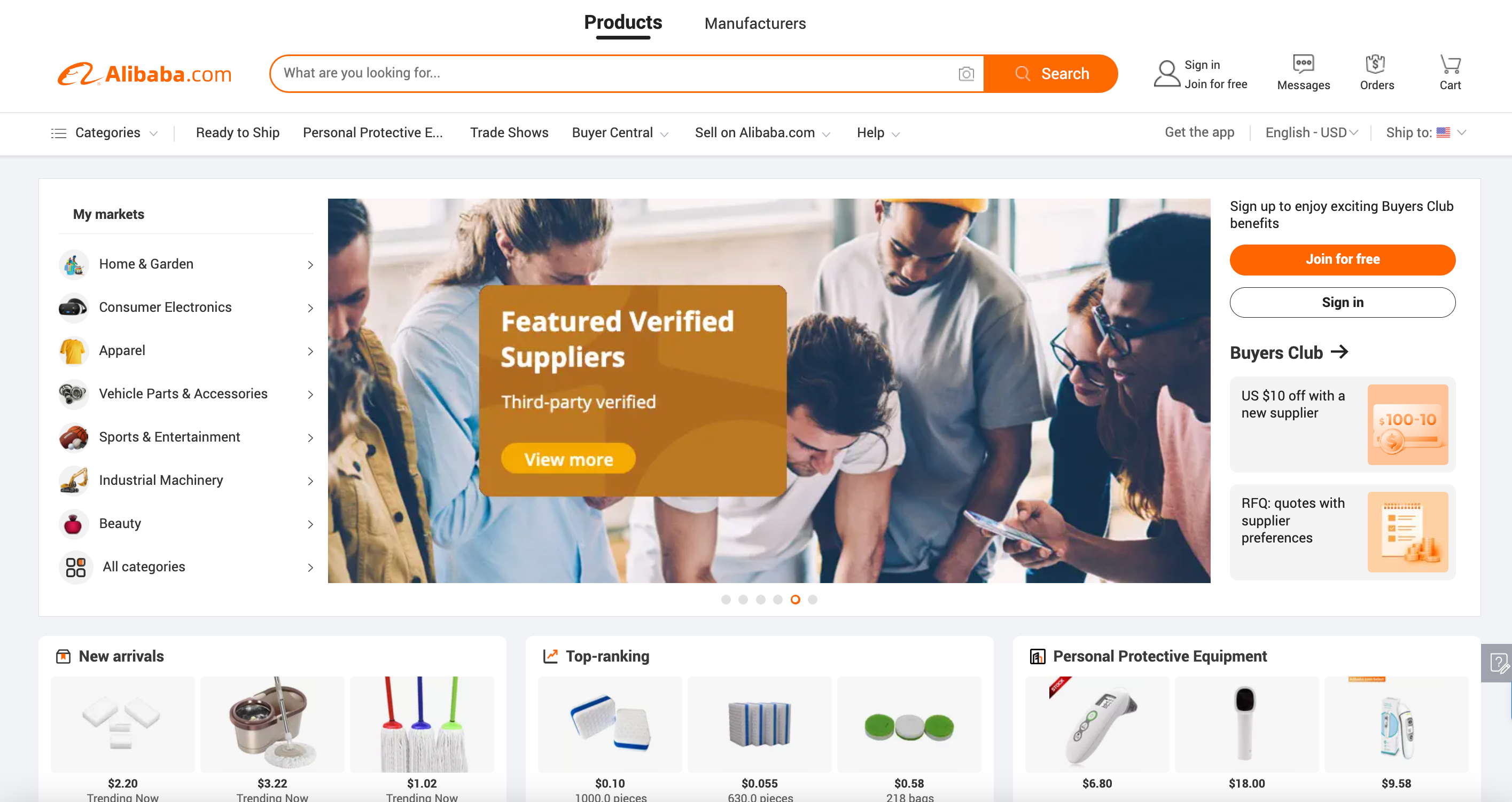
Taobao
Connecting consumers to consumers, Taobao shares many similarities with Ebay, allowing Chinese consumers to sell products to each other. Taobao boasts an impressive eight million merchants selling to 875 million daily active users.
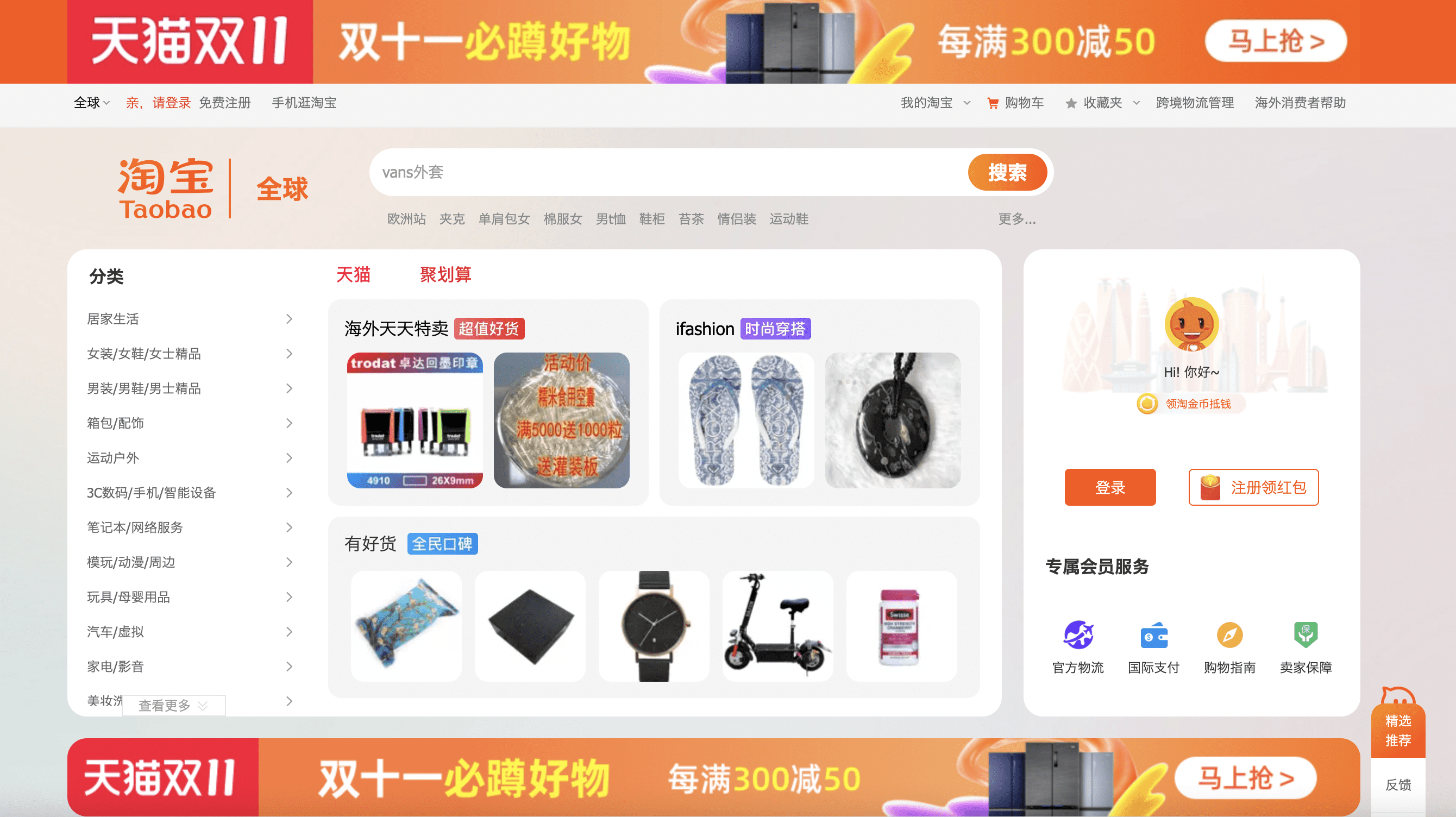
Tmall
Tmall (formerly Taobao Mall) is the “Amazon of China” as it primarily connects merchants to consumers. It also features more than 70,000 Chinese and international brands from more than 50,000 merchants.
The site serves 180 million buyers, and has a 47.6% share of the business-to-consumer retail in China (Wikipedia).
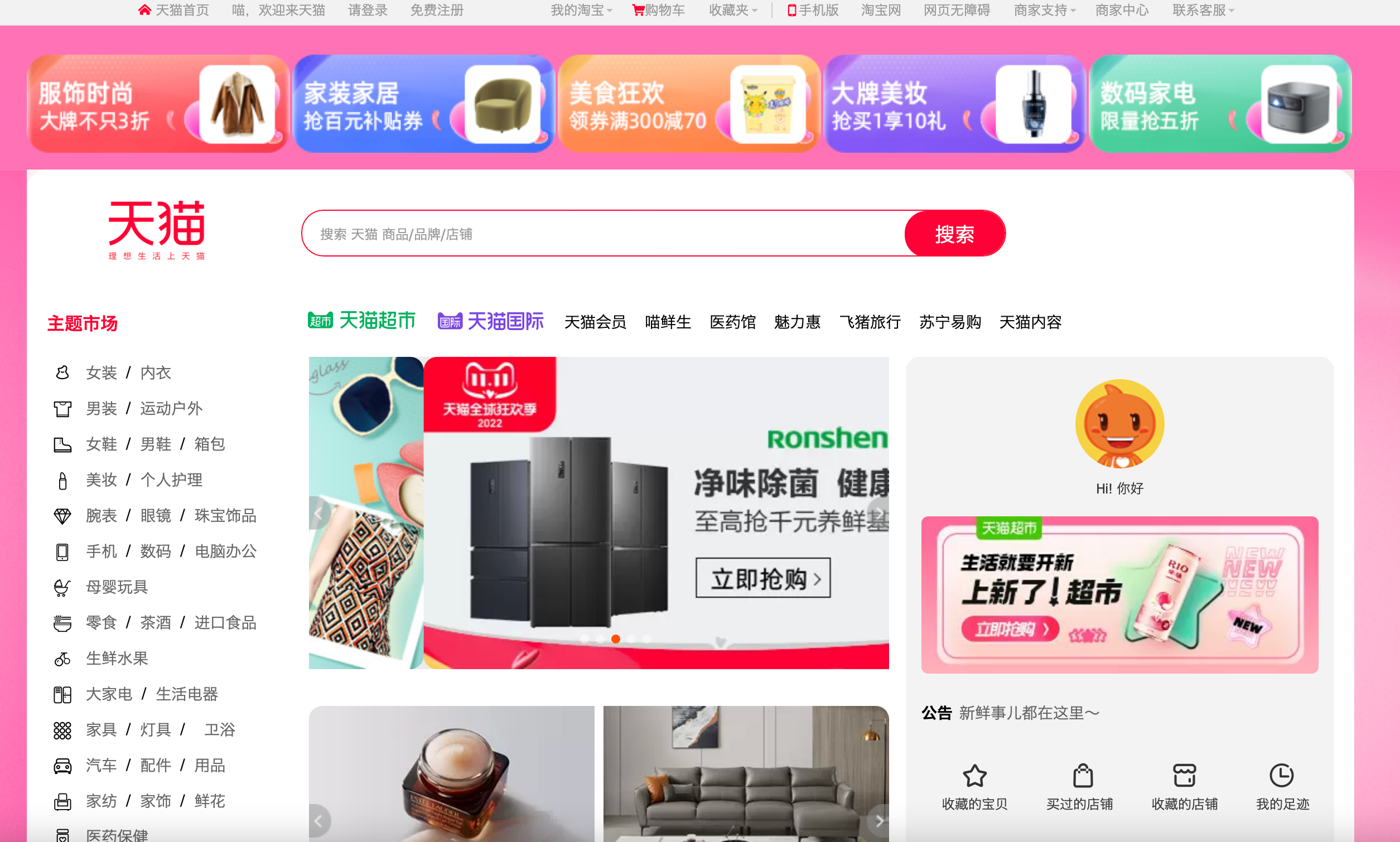
Aliexpress
At first glance, Aliexpress seems similar to Alibaba in that it connects merchants to overseas manufacturers. However, unlike Alibaba, Aliexpress allows international merchants to order individual items and dropship them to end users.
Aliexpress also helps merchants find wholesale products — such as cell phone cases, electronics, and other products — sold at high-volume discounted prices.
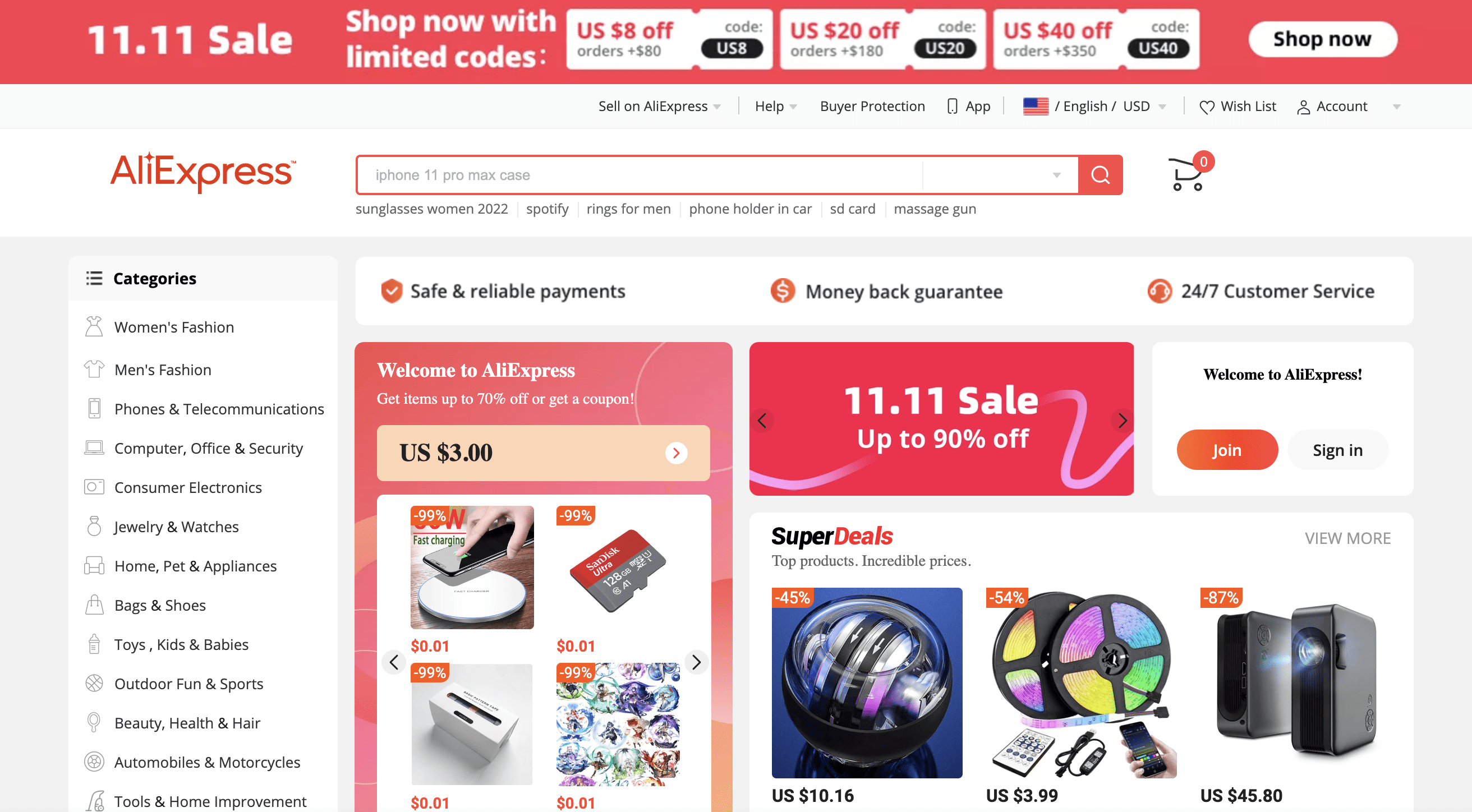
Alipay
In addition to its peer-to-peer websites, Alibaba also has its own form of “PayPal” called Alipay.
Alipay allows users to pay for things like taxi services and movie tickets through a mobile device and has investment options. For this reason, Alipay’s fund, Yu’e Bao, is one of the fastest growing money-market funds in the world.
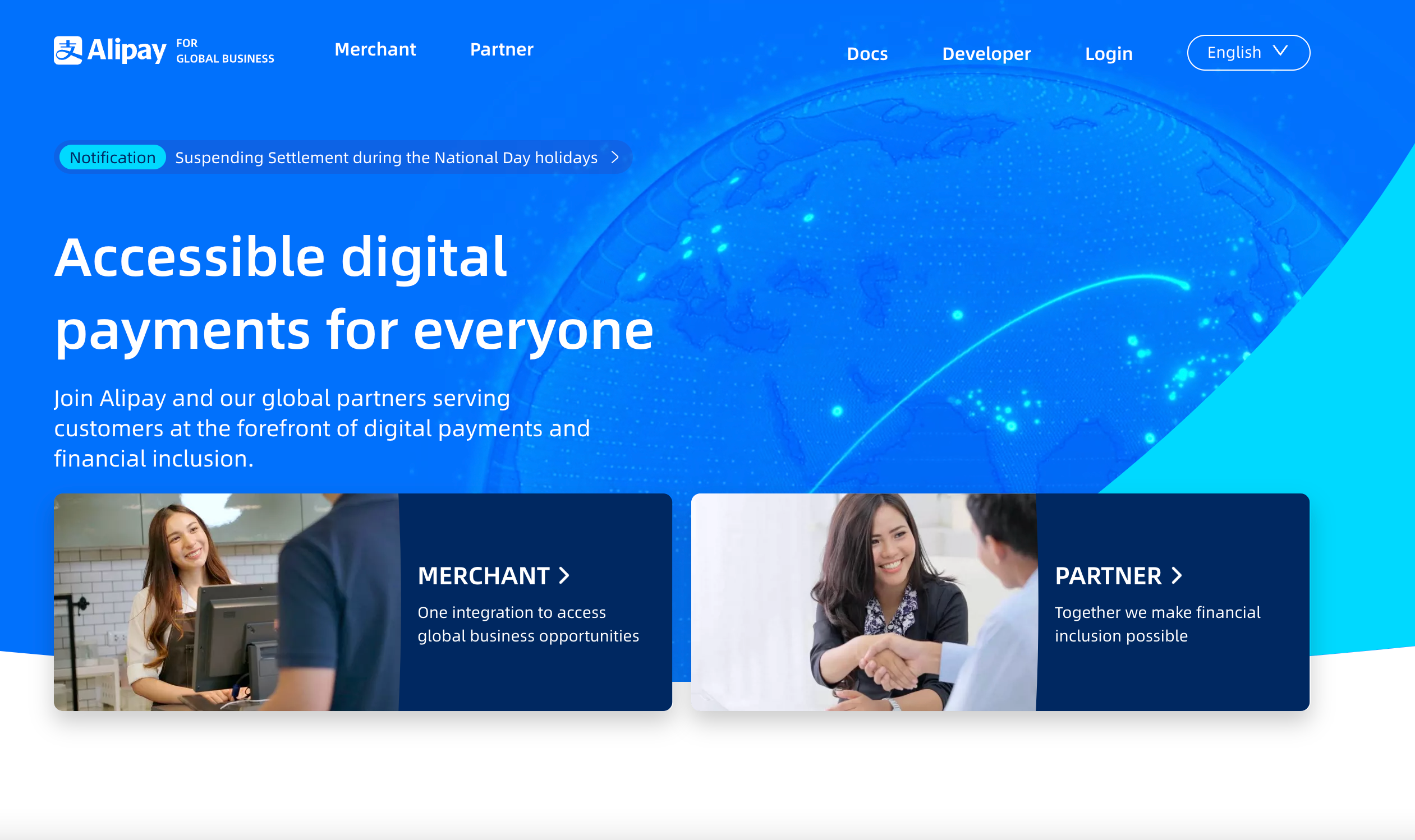
Who is Alibaba for?
Consumers
As of now, Alibaba is primarily an ecommerce store (similar to Amazon) that operates in China, mainly through its Taobao and Tmall brands.
Through Tmall, shoppers can purchase the same types of products they would find on Amazon. Beauty products, kitchen and dining products, toys and games, tools and more are all available for purchase on Tmall.
Tmall is also quick, offering delivery in two days or fewer — similar to Amazon Prime.
Private Label Manufacturing
A private label product is a good or service produced by another company and resold under a different brand or label. Popular examples of private label products include Target’s Market Pantry brand and Walmart’s Great Value brand.
Many of the third-party merchants who sell on Amazon create private label products which they market and sell on the platform. Alibaba.com is the optimal site for connecting merchants to manufacturing.
Dropshipping
For new entrepreneurs who don’t have the requisite capital to create private label products or purchase wholesale goods, dropshipping is a great low-cost solution.
A dropshipper advertises the products of a manufacturer under their own brand. Then, when the product sells, the merchant orders the product through the manufacturer who then ships it to the consumer on their behalf.
Aliexpress is the primary site dropshippers use.
Wholesaling
Wholesaling is the practice of buying bulk goods at the distribution level to resell to individual consumers.
Unlike private label manufacturing, wholesalers sell existing brands versus their own, and they can be purchased through both Alibaba and Aliexpress.
How can Alibaba be used?
Now that you understand a little more about Alibaba, here is a quick guide on how you can get started using it. In this example, I will show you how to source and manufacture private label goods to sell on Amazon.
Finding a product and manufacturer on Alibaba
Once you’re on Alibaba, you have two ways to find a supplier for your product:
- Product Search. On the Alibaba home page, you can enter the item or related keywords that you wish to source in the search bar to will display relevant results.
- Request-for-Quote (RFQ). This method involves putting out an advertisement for the product you need to have manufactured, and inviting interested merchants to contact you through your Alibaba account. Simply click on the ‘My Alibaba’ icon, select the submit RFQ option, and then enter and submit your details. Replies often arrive within 24 hours.
Questions to ask a supplier
Once you’ve connected with a supplier, there are certain questions you should ask. Not only does this grant you important information about your future product, it also establishes credibility with your new supplier and helps you size up their communication skills.
For a template of the sheet I send them, check out episode 4 of the Million Dollar Case Study: Find Alibaba Suppliers.
Performing due diligence on a supplier
After you’ve established a relationship with a few suppliers (I recommend that you speak with at least three to five, to keep your options open) you will want to verify their credentials.
There are two key methods for doing this (aside from visiting the actual factory itself).
1. Verifying suppliers through Alibaba’s various merchant credentials:
- Length of time on Alibaba — The years a supplier has been on Alibaba.
- Trade Assurance — Alibaba’s Trade Assurance program protects buyers from poor quality products and late (or absent) deliveries. When problems arise, Trade Assurance investigates the issue and settles disputes.
- Transaction Score — Alibaba uses an “orange heart” grading system for the quantity and quality of transactions done through Alibaba. The ratings range from half a heart (0 – 2,000 score) to five full hearts (50,000,000+ score).
- Reviews — Shoppers can use a scale from one to five to rate manufacturers they’ve used in the past — one being poor; five being perfect. Reviews are further divided into three categories: Supplier Service, On-Time Shipment, and Product Quality.
- Response Rate — A supplier’s response rate score is the percentage of replies sent within 24 hours of receiving a message.
- Transactions — Alibaba gives the total dollar and volume of the transactions handled by the supplier.
- On-Time Delivery Rate — The percentage score represents the share of transactions arriving on or before the delivery date.
2. Verifying suppliers using a tool like Jungle Scout’s Supplier Database:
- Total Shipments — Supplier Database shows you how many shipments have actually come into the US.
- Total Customers — In addition, Supplier Database lets you see how many customers imported shipments into the US.
- Top Customers — See who imported goods into the US, regardless of the brand, especially when sourcing products from the same supplier a competitor or big brand uses.
- Manufactured Products — The database displays the types of products the supplier creates in an easy-to-read pie chart.
- Shipment History — Review a supplier’s shipment history to determine how often they import goods into the US.
- Shipment Information — This list shows you what was imported, the shipping code(s) used, weight, and quantity.
Order samples
Having established a relationship with a vendor, it’s time to order a sample; a 100% necessary step for three reasons.
First, you want to ensure that the quality of the product meets your expectations.
Second, you want to see how quickly the product is manufactured and sent to you.
Finally, you want to observe the communication abilities of your supplier, ensuring that they understand exactly what you, your business, and ultimately, your customers need.
As for cost, you can expect the sample and shipping to run you approximately $50-$100.
When you receive your sample, be sure to look it over and inspect it for any issues. Then, if you like it, make sure you communicate that the end product needs to be exactly the same as the sample you received.
If changes need to be made, communicate those as well. (You may need to order a second sample if you require too many changes.)
Negotiate deals with the supplier
Once you’ve found a supplier you want to work with, you will need to negotiate with them.
Most suppliers have up to 10% wiggle room in their pricing, so the best thing to do when negotiating is to reply with a price point somewhat beyond what you want — but still within reason. Hopefully they will meet you somewhere in the middle.
After the price is mutually agreed upon, arrange payment with the vendor through a preferred method. I recommend using PayPal or Alibaba E-checking/Trade Assurance since both options protect you as a buyer.
Logistics and shipping
Lastly, you will need to arrange shipping with your supplier.
For some methods, such as express/air shipping, the supplier can arrange it for you. If you plan to ship by sea and have your products trucked to your final destination, you should probably hire a freight forwarder to assist. These professionals can help you handle bonds, customs, warehousing, trucking, and more.
In my experience, the small fees they charge are well worth the expertise and time saved you get in return.
How is Alibaba different from Amazon?
While Amazon and Alibaba share a lot of similarities, there are some major differences you should consider.
Cultural Differences
If you’re new to working with international businesses, there are a few things you need to know about Alibaba and Chinese culture. Understanding these differences will improve your ability to communicate and negotiate with vendors, resulting in smoother transactions.
First, there is the obvious language barrier for many sellers and Chinese suppliers. While most of the sales representatives on Alibaba can speak, read, and write English, there can still be some difficulty with communications, especially over email.
Furthermore, Chinese pleasantries are different. They might refer to you as “honey” or “dear” in emails, which is perfectly normal. Further, honor is a big deal in China. Be sure to be respectful when speaking with your suppliers (always a good idea, regardless of your supplier’s location!).
Work Ethic and Holidays
In China, many workers live by the 996 schedule, meaning they work from 9am to 9pm, six days per week. These 72-hour weeks might seem intense for those used to 40-hour work weeks. However, it is fairly common in China.
On the other hand, many Chinese workers takes four major vacations throughout the year: Spring Festival (Chinese New Year), Qingming (Tomb-Sweeping Festival), Labour Day, and Dragonboat Festival.
All four of these celebrations tend to last a week or longer, and during these times, much of China stops working. This can impact the speed at which you receive replies from your merchants, as well as lead and shipping times.
To further exacerbate the slow down, China gets pounded with orders from October to December.
This isn’t only for American shopping holidays such as Black Friday and Cyber Monday, but also for China’s own version of “Black Friday”. It’s called Singles Day, and it falls on November 11.
Like Black Friday, Singles Day is touted as China’s biggest shopping day of the year. One implicit benefit of Singles Day is that many of Alibaba’s products are discounted, much in the same way that Amazon discounts their products for Black Friday, Cyber Monday, and Prime Day.
What risks are the risks of using Alibaba?
The language barrier isn’t the only issue buyers will face when using Alibaba. While there are many security protocols in place to avoid scams on Alibaba’s marketplace, they still happen on occasion. This is why it’s important to perform due diligence not with just Alibaba’s credentials but using the Supplier Database to check up on the supplier.
The more business a supplier has done in the U.S. (if you’re a U.S. buyer, of course), the more likely they are to be trusted.
Furthermore, the Supplier Database shows you the other businesses that the supplier has worked with in the past, including large brands like Target, Walmart, and Amazon itself.
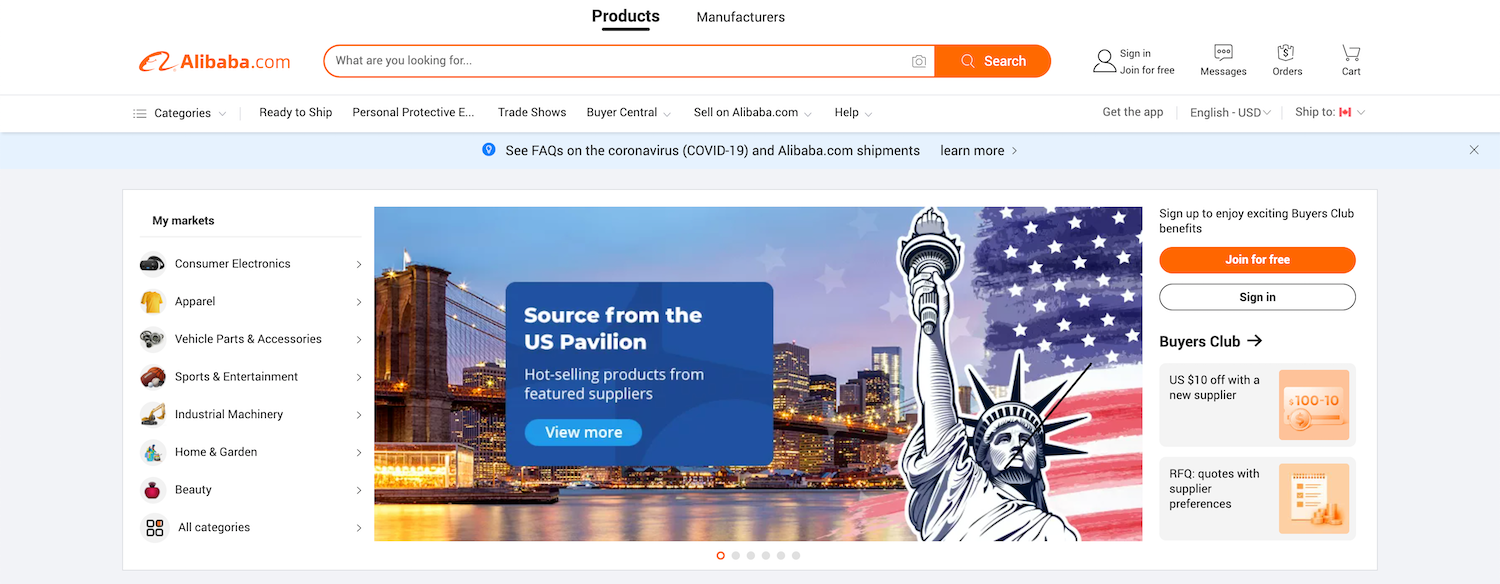
 5 Comments
5 Comments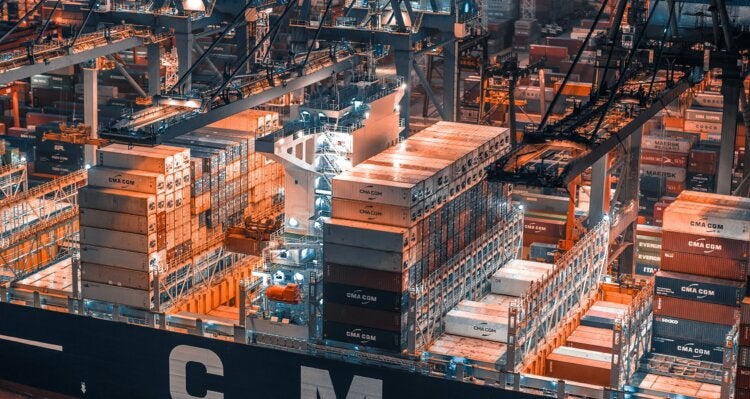
5 comments on “What Is Alibaba? How to Work with One of the World’s Largest Ecommerce Companies”